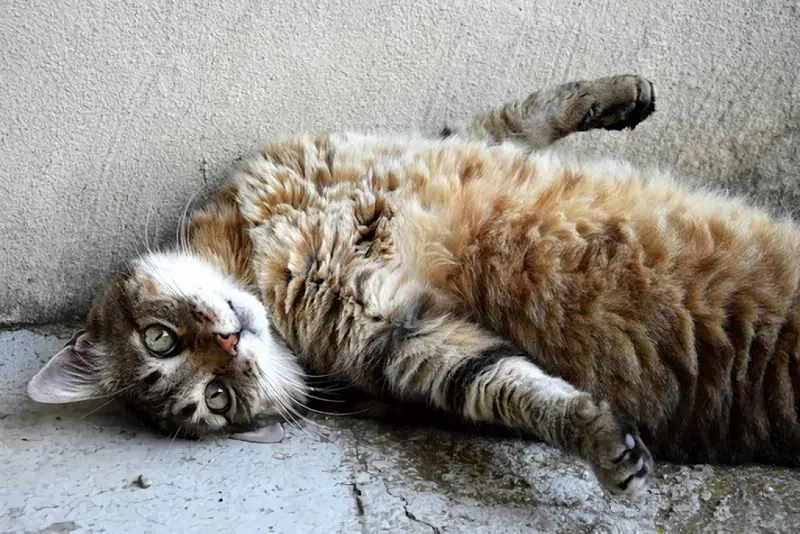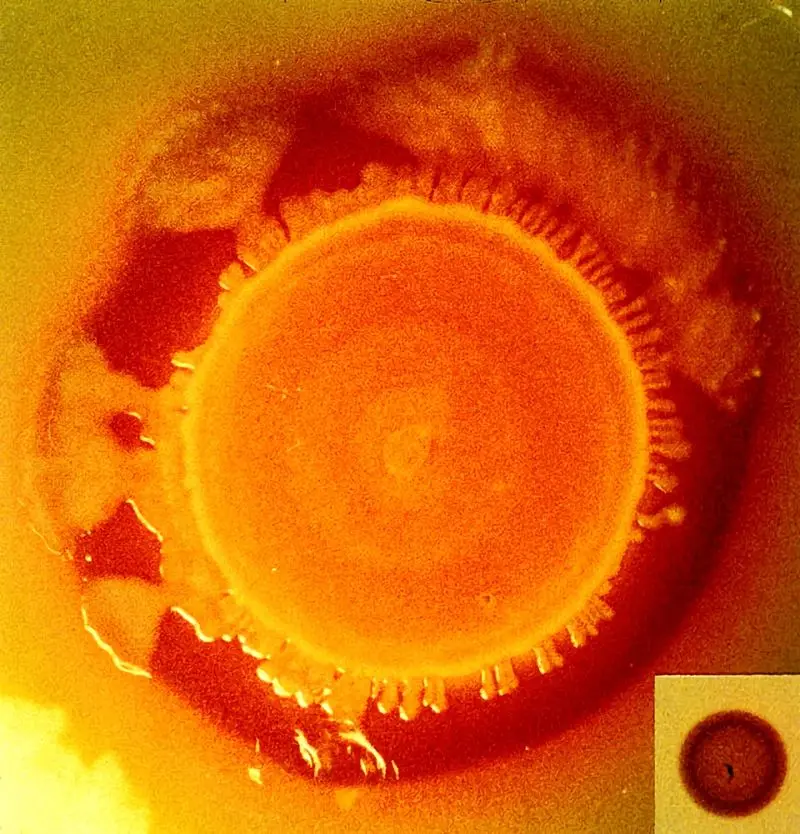 ↪ Description - GRISEOFULVIN (MICROSIZE), GRISEOFULVIN (ULTRAMICROSIZE)
Note: all doses are for microsize preparations unless otherwise indicated.Dogs: For susceptible dermatophytic infections: a) Microsize: 50 mg/kg/day divided q8-12h PO; Ultramicrosize: 25 mg/kg/day divided q8-12h PO.... ↪ Read more
↪ Description - GRISEOFULVIN (MICROSIZE), GRISEOFULVIN (ULTRAMICROSIZE)
Note: all doses are for microsize preparations unless otherwise indicated.Dogs: For susceptible dermatophytic infections: a) Microsize: 50 mg/kg/day divided q8-12h PO; Ultramicrosize: 25 mg/kg/day divided q8-12h PO.... ↪ Read more Veterinary Drug Handbook (VDH) is the reference veterinarians turn to when they want an independent source of information on the drugs that are used in veterinary medicine today.
-
 Is veterinary Liniment Gel safe for humans?
Is veterinary Liniment Gel safe for humans? -
 Giving Your Cat A Pill
Giving Your Cat A Pill -
 Dog Aggression
Dog Aggression -
 Dogs May Help Boost Infant Health
Dogs May Help Boost Infant Health -
 Animal-Assisted Therapy, Veterinary Social Work, & Social Work With People & Pets in Crisis
Animal-Assisted Therapy, Veterinary Social Work, & Social Work With People & Pets in Crisis -
 On-demand veterinary service gives advice on poorly pets
On-demand veterinary service gives advice on poorly pets -
 Should we stop throwing sticks for dogs?
Should we stop throwing sticks for dogs? -
 What does PU/PD mean in veterinary medicine?
What does PU/PD mean in veterinary medicine? -
 Can breathing in cat hair be harmful?
Can breathing in cat hair be harmful? -
 Bill calls for ban on sales of dogs, cats in Maine pet stores
Bill calls for ban on sales of dogs, cats in Maine pet stores -
 Common Meanings Of Cat Behavior
Common Meanings Of Cat Behavior -
 What does DVM stand for in veterinary?
What does DVM stand for in veterinary? -
 Curing Bad Cat Breath
Curing Bad Cat Breath -
 New Tracking Tool for Pathogen Investigators
New Tracking Tool for Pathogen Investigators -
Can binturongs be kept as pets?
-
 How long do instruments stay sterile after autoclaving veterinary?
How long do instruments stay sterile after autoclaving veterinary?
Doses - GRISEOFULVIN (MICROSIZE), GRISEOFULVIN (ULTRAMICROSIZE)
 ↪ Description - GRISEOFULVIN (MICROSIZE), GRISEOFULVIN (ULTRAMICROSIZE)
Note: all doses are for microsize preparations unless otherwise indicated.Dogs: For susceptible dermatophytic infections: a) Microsize: 50 mg/kg/day divided q8-12h PO; Ultramicrosize: 25 mg/kg/day divided q8-12h PO.... ↪ Read more
↪ Description - GRISEOFULVIN (MICROSIZE), GRISEOFULVIN (ULTRAMICROSIZE)
Note: all doses are for microsize preparations unless otherwise indicated.Dogs: For susceptible dermatophytic infections: a) Microsize: 50 mg/kg/day divided q8-12h PO; Ultramicrosize: 25 mg/kg/day divided q8-12h PO.... ↪ Read more GRISEOFULVIN (MICROSIZE), GRISEOFULVIN (ULTRAMICROSIZE)
 ↪ Doses - GRISEOFULVIN (MICROSIZE), GRISEOFULVIN (ULTRAMICROSIZE)
Chemistry - A fugistatic antibiotic produced by species of Penicillium (primarily P. griseofulvum), griseofulvin occurs as an odorless or nearly odorless, bitter tasting, white to creamy white powder. It is very slightly... ↪ Read more
↪ Doses - GRISEOFULVIN (MICROSIZE), GRISEOFULVIN (ULTRAMICROSIZE)
Chemistry - A fugistatic antibiotic produced by species of Penicillium (primarily P. griseofulvum), griseofulvin occurs as an odorless or nearly odorless, bitter tasting, white to creamy white powder. It is very slightly... ↪ Read more Doses - GONADORELIN
 ↪ Description - GONADORELIN
Dogs: GnRH challenge to test pituitary sufficiency or testicular steroidogenesis: a) 125 - 250 ng/kg (refer to reference for more information) (Amann 1986) To aid in the descent of cryptorchid testes: a) 50 - 100 micrograms SQ or IV; if no response give... ↪ Read more
↪ Description - GONADORELIN
Dogs: GnRH challenge to test pituitary sufficiency or testicular steroidogenesis: a) 125 - 250 ng/kg (refer to reference for more information) (Amann 1986) To aid in the descent of cryptorchid testes: a) 50 - 100 micrograms SQ or IV; if no response give... ↪ Read more GONADORELIN
 ↪ Doses - GONADORELIN
Chemistry - A hormone produced by the hypothalamus, gonadorelin is obtained either from natural sources or is synthetically produced. It is a decapeptide that occurs as white or faintly yellowish-white powder. One gram is soluble in 25 ml of water or in 50 ml of methyl... ↪ Read more
↪ Doses - GONADORELIN
Chemistry - A hormone produced by the hypothalamus, gonadorelin is obtained either from natural sources or is synthetically produced. It is a decapeptide that occurs as white or faintly yellowish-white powder. One gram is soluble in 25 ml of water or in 50 ml of methyl... ↪ Read more Doses - GLYCOPYRROLATE
 Dogs: As an adjunct to anesthesia: a) 0.011 mg/kg IV, IM, or SQ (Package Insert - Robinul®-V, Robins) b) 0.01 - 0.02 mg/kg SQ or IM (Bellah 1988) For adjunctive therapy of bradyarrhythmias: a) 0.011 mg/kg IV or IM (Russell and Rush 1995) To reduce hypersialism: a) 0.01 mg/kg SQ prn... ↪ Read more
Dogs: As an adjunct to anesthesia: a) 0.011 mg/kg IV, IM, or SQ (Package Insert - Robinul®-V, Robins) b) 0.01 - 0.02 mg/kg SQ or IM (Bellah 1988) For adjunctive therapy of bradyarrhythmias: a) 0.011 mg/kg IV or IM (Russell and Rush 1995) To reduce hypersialism: a) 0.01 mg/kg SQ prn... ↪ Read more GLYCOPYRROLATE
 ↪ Doses - GLYCOPYRROLATE
Chemistry - A synthetic quaternary ammonium antimuscarinic agent, glycopyrrolate occurs as abitter-tasting, practically odorless, white, crystalline powder with a melting range of 193 - 198°C. One gram is soluble in 20 ml of water; 30 ml of alcohol. The... ↪ Read more
↪ Doses - GLYCOPYRROLATE
Chemistry - A synthetic quaternary ammonium antimuscarinic agent, glycopyrrolate occurs as abitter-tasting, practically odorless, white, crystalline powder with a melting range of 193 - 198°C. One gram is soluble in 20 ml of water; 30 ml of alcohol. The... ↪ Read more Doses - GLYCERINE, ORAL
 ↪ Description - GLYCERINE, ORAL
Dogs & Cats: For acute glaucoma: a) 1 - 2 ml/kg (of 50% solution), may repeat in 8 hours if necessary; withhold water for 30-60 minutes after administration. (Brooks 1986), (Brooks 1990) b) Dog: 0.6 ml/kg (percentage not specified) PO for 1-2... ↪ Read more
↪ Description - GLYCERINE, ORAL
Dogs & Cats: For acute glaucoma: a) 1 - 2 ml/kg (of 50% solution), may repeat in 8 hours if necessary; withhold water for 30-60 minutes after administration. (Brooks 1986), (Brooks 1990) b) Dog: 0.6 ml/kg (percentage not specified) PO for 1-2... ↪ Read more GLYCERINE, ORAL
 ↪ Doses - GLYCERINE, ORAL
Chemistry - A trihydric alcohol, glycerin occurs as clear, sweet-tasting, syrupy, hygroscopic liquidthat has a characteristic odor. It is miscible with water and alcohol, but not miscible in oils. Glycerinsolutions are neutral to litmus. Glycerin may also be known... ↪ Read more
↪ Doses - GLYCERINE, ORAL
Chemistry - A trihydric alcohol, glycerin occurs as clear, sweet-tasting, syrupy, hygroscopic liquidthat has a characteristic odor. It is miscible with water and alcohol, but not miscible in oils. Glycerinsolutions are neutral to litmus. Glycerin may also be known... ↪ Read more GLUCOCORTICOID AGENTS, GENERAL INFORMATION
 Glucocorticoid Comparison TablePharmacology - GLUCOCORTICOID AGENTS, GENERAL INFORMATION Glucocorticoids have effects on virtually every cel type and system in mammals. An overview of the effects of these agents follows: Cardiovascular System: Glucocorticoids can reduce capillary permeability and... ↪ Read more
Glucocorticoid Comparison TablePharmacology - GLUCOCORTICOID AGENTS, GENERAL INFORMATION Glucocorticoids have effects on virtually every cel type and system in mammals. An overview of the effects of these agents follows: Cardiovascular System: Glucocorticoids can reduce capillary permeability and... ↪ Read more Doses - GLIPIZIDE
 ↪ Description - GLIPIZIDE
Cats: For diabetes mellitus: a) In obese, non-ketotic cats: 0.25 - 0.5 mg/kg twice daily (Nichols 1992) b) For nonketotic, relatively healthy (on PE) cats whose owners refuse to administer insulin: 2.5 mg PO twice daily with food (with increased fiber content). If... ↪ Read more
↪ Description - GLIPIZIDE
Cats: For diabetes mellitus: a) In obese, non-ketotic cats: 0.25 - 0.5 mg/kg twice daily (Nichols 1992) b) For nonketotic, relatively healthy (on PE) cats whose owners refuse to administer insulin: 2.5 mg PO twice daily with food (with increased fiber content). If... ↪ Read more GLIPIZIDE
 ↪ Doses - GLIPIZIDE
Chemistry - A sulfonylurea antidiabetic agent, glipizide (also known as glydiazinamide) occurs asa whitish powder. It is practically insoluble in water and has pKa of 5.9.Storage, Stability, Compatibility Tablets should be stored in tight, light-resistant containers... ↪ Read more
↪ Doses - GLIPIZIDE
Chemistry - A sulfonylurea antidiabetic agent, glipizide (also known as glydiazinamide) occurs asa whitish powder. It is practically insoluble in water and has pKa of 5.9.Storage, Stability, Compatibility Tablets should be stored in tight, light-resistant containers... ↪ Read more Doses - GLEPTOFERRON
 ↪ Description - GLEPTOFERRON
Swine: a) For prevention or iron deficiency anemia in baby pigs: 1 ml (200 mg) IM per pig on or before 3 days of age. For treatment of iron deficiency anemia in baby pigs: 1 ml (200 mg) IM per pig as soon as signs of deficiency appear. (Label directions;... ↪ Read more
↪ Description - GLEPTOFERRON
Swine: a) For prevention or iron deficiency anemia in baby pigs: 1 ml (200 mg) IM per pig on or before 3 days of age. For treatment of iron deficiency anemia in baby pigs: 1 ml (200 mg) IM per pig as soon as signs of deficiency appear. (Label directions;... ↪ Read more Popular Diagnoses
Packed cell volume (PCV, hematocrit) Reflex ovulator Mucolytic Microfilaricide Bronchodilator Hematocrit Glucocorticoid Monoamine oxidase inhibitor (MAOI) ↪ All veterinary diagnoseOther Diagnoses
Polyp Polyphagia Polyuria Post-operative Proestrus (also Proestrous) Progesterone Prolactin Prolapsed RectumPopular Veterinary Clinics
VCA Welborn Animal Hospital, 7860 Washington Avenue Kansas City, KS 66112 USA MedVet Columbus, 300 East Wilson Bridge Road, Worthington, OH Rutland Veterinary Clinic & Surgical Center, 90 East Pittsford Road, Rutland, VT VCA Paradise Valley Emergency Animal Hospital, 6969 East Shea Boulevard Suite 150 Scottsdale, AZ 85254 USA Connecticut Veterinary Center & Pet ER, 470 Oakwood Ave West Hartford, CT 06110 USA Norway Veterinary Hospital, 10 Main St P.O. Box 273 Norway, ME 04268 USA Craig Road Animal Hospital, 5051 West Craig Road, Las Vegas, NV Abri Veterinary Hospital Inc, 1449 Trademart Boulevard Winston-Salem, NC 27127 USA ↪ All veterinary clinicsOther Veterinary Clinics
Chappelle Small Animal Hospital, 1601 North US Highway 287, Fort Collins Colorado State University, 300 West Drake Road Fort Collins, CO 80523-1620 USA VCA East Anchorage Animal Hospital, 2639 Boniface Pkwy Anchorage, AK 99504 USA Companion Animal Clinic, 2626 North Campbell Avenue Tucson, AZ 85719 USA East Maryland Animal Hospital, 529 East Maryland Avenue Phoenix, AZ 85012 USA Arcadia Animal Clinic, 3941 East Meadowbrook Avenue, Phoenix, AZ Margaret Mc Allister Brock Spay & Neuter, 1521 W Dobbins Road Phoenix, AZ 85041 USA Hollydale Veterinary Hospital, 11205 Garfield Avenue, South Gate, CAPopular Drugs
DOXYLAMINE SUCCINATE Doses - PENICILLIN V POTASSIUM Doses - METHYLPREDNISOLONE, METHYLPREDNISOLONE ACETATE, METHYLPREDNISOLONE SODIUM SUCCINATE ACEPROMAZINE MALEATE Doses - PREDNISOLONE, PREDNISOLONE SODIUM SUCCINATE, PREDNISOLONE ACETATE, PREDNISONE Doses - FURAZOLIDONE Doses - FERROUS SULFATE Doses - LEVAMISOLE ↪ All veterinary drugOther Drugs
FlunixiJect NOVOX® CAPLETS (carprofen) Non-steroidal anti-inflammatory drug Dexamethasone SP Udderdine 502 Dexium Udderdine 105 DexaJect NOROCILLIN Injectable AntibioticPopular Terms
Subalbinotic Steatis Uteroverdin Paradoxical CSF acidosis Figure of 8 suture pattern Nerve root signature Ovariohysterectomy Abrev OVH Signalment ↪ All veterinary termOther Terms
Prerenal azotemia Prevalence Primary abnormality Primary closure Primary oocyte Primary uterine inertia Prion Prionsveterinary-help.com
© 2011-2025 Veterinary Clinics, Diagnoses, Terms and Drug Handbook Online

